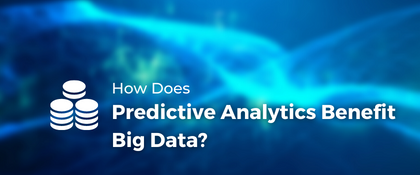Big Data Analytics: Revolutionizing Sales and Marketing
Summary
Big Data is revolutionizing sales and marketing by enhancing precision and insights. In 2015, it impacted these domains by improving marketing spending precision, enabling salespeople to use data-driven methodologies for customer retention and expansion, enhancing sales forecasting accuracy with sophisticated algorithms, and introducing real-time data visualization for informed decisions. Big Data marketing involves data lakes, cloud technology, and predictive analytics for comprehensive insights. This trend toward data-driven strategies is reshaping how businesses understand customers and formulate effective marketing tactics.
Table of Content
Along with generating an ever-increasing repository of data that’s posing enormous challenges, Big Data is also bringing in significant business opportunities. This is especially true in the ways in which Big Data analytics is affecting the performance of sales and marketing experts, the right way. Yes, the age of "Big Data" has clearly dawned to impact sales and marketing in 2015. Take a look.
Big Data changing Sales and Marketing Models in 2015
The sales and marketing scene globally is going through some revolutionary changes in 2015. From Big Data analytics making their presence felt in the ways in which companies are reaching out to their consumers to marketers relying on robust toolsets to target pre-defined segments and more, these changes include:
- Even though large enterprises have been the first to adopt predictive analytics and big data technologies, the small and medium ones are also getting on board gradually and reaping huge benefits.
- Marketing spending is becoming significantly more precise because of Big Data insights. Marketers are using more informed and data-backed information for targeting prospects and deploying their account-based marketing strategies.
- The salespeople are no longer reliant on traditional means for targeting their high-value prospects. Today, they are fast adopting data-driven methodologies for keeping their existing customers intact and are expanding available opportunities in all conceivable ways.
- The accuracy levels in sales forecasting are improving dramatically with sophisticated algorithms replacing the "gut feel" weapon for predicting future sales.
- Data visualization technologies relevant to real-time sales have emerged to empower sales managers and help them tweak their favorite battlefield tactics in line with live data feeds (Here's the perfect parcel of information to learn data science).
Big Data Analytics in Marketing
It’s acceptable that Big Data marketing toolsets are still going through the process of maturing, but then use of proper business analytics, storage of data on cloud platforms, and other big data best practices are serving as critical determinants for Big Data (sales and marketing) success. In 2015, analysts were using high data quality for comprehensive data ingestion and integrating datasets from diverse online/ offline sources to help organizations get high-definition views of their customers. They are intelligently identifying hidden behaviors and recognizing purchase patterns via smart customer analytics, data pattern discovery options, and data science technologies. By Assemble insights into well-curated and easy-to-understand visualizations and dashboards, these data scientists are helping marketers and other stakeholders make better business decisions. Additionally, those dealing with Big Data marketing analytics are delivering key insights, on a consistent basis, for enabling downstream systems to take instant actions and gain optimum results from their overall marketing efforts.
Big Data Marketing Trends in 2015
As more and more businesses are embracing big data marketing, they are getting you understand their customers in better ways. Now, companies are designing more lucrative sales and marketing strategies, thereby giving rise to the following trends.
- Data lakes are being used for big data marketing wherein multiple data sources are being used and dumped into a more robust Hadoop repository. Organic tools are being implemented and analysts are gaining valuable insights from these huge data lakes that are home to traditional and click stream data alike. Companies are now “democratizing” and creating tools using data lakes for their big data marketing tactics.
- Cloud technology has come to the rescue of big data processing tools and has allowed smaller companies to leverage the many advantages of Hadoop and its tools. For instance, Amazon Redshift, a data warehouse hosted on the cloud, is offering extensive reporting techniques for structured data. Big data marketing companies have gained a new dimension with the cost-effective and easier-to-use cloud features, and they are now scaling their analytics operations an as-needed basis, either up or down (also consider checking out this career guide for data science jobs).
- Predictive marketing analytics are gaining more power with tools that are extracting meaning from multiple attributes and data records. With cheap computational power being freely available to marketers, they are now exploring new and existing data in innovative ways, formulating queries via non-traditional ways, and utilizing SQL querying tools for their Hadoop frameworks.
Way Forward
Currently, salespeople and marketers are increasing their revenue contributions by getting answers to data management problems. The challenges faced by results-driven marketers are finding solutions via initiatives such as personalization, marketing automation, and predictive marketing. These capabilities have to be enhanced and unified for enriching the customer and prospect lifecycle data for any business; and at the organization’s own pace.
Learn Big Data. Become a Data Science professional. Apply today!





